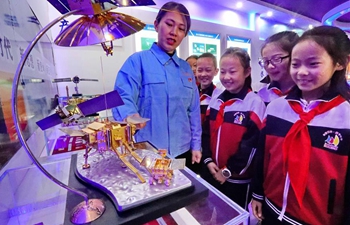WASHINGTON, April 24 (Xinhua) -- U.S. scientists have demonstrated a medical robot that can navigate autonomously inside the body like a self-driving car to assist surgeons in complex heart operations.
The study published on Wednesday in the journal Science Robotics showed that in an animal model of cardiac valve repair, a robotic catheter, guided by an optical touch sensor, can find its way along the walls of a beating, blood-filled heart to a leaky valve.
The study's senior investigator Pierre Dupont, chief of Pediatric Cardiac Bioengineering at Boston Children's Hospital, said that, to his knowledge, this is the first report of a self-driving medical robot that can navigate to a desired destination inside the body.
The touch sensor, equipped with a tip-mounted camera, works in much the way insects' antennae or the whiskers of rodents sample their surroundings to build mental maps of unfamiliar, dark environments. It can figure out where it is in the heart and where it needs to go.
The sensor told the catheter whether it was touching blood, the heart wall or a valve and how hard it was pressing to keep it from damaging the beating heart, according to the study.
The robot relied on preoperative imaging and AI-enabled image processing algorithms to interpret the visual features, thus advancing without guidance from the base of the heart, along the wall of the left ventricle until it reached the leak location and the cardiac surgeon took control to close the leak.
Dupont said the robot could spare the need for fluoroscopic imaging, which is typically used in the heart operation and exposes patients to ionizing radiation.
In the future, this technology could also provide guidance during particularly difficult cases or assisting in operations in parts of the world that lack highly experienced surgeons.













